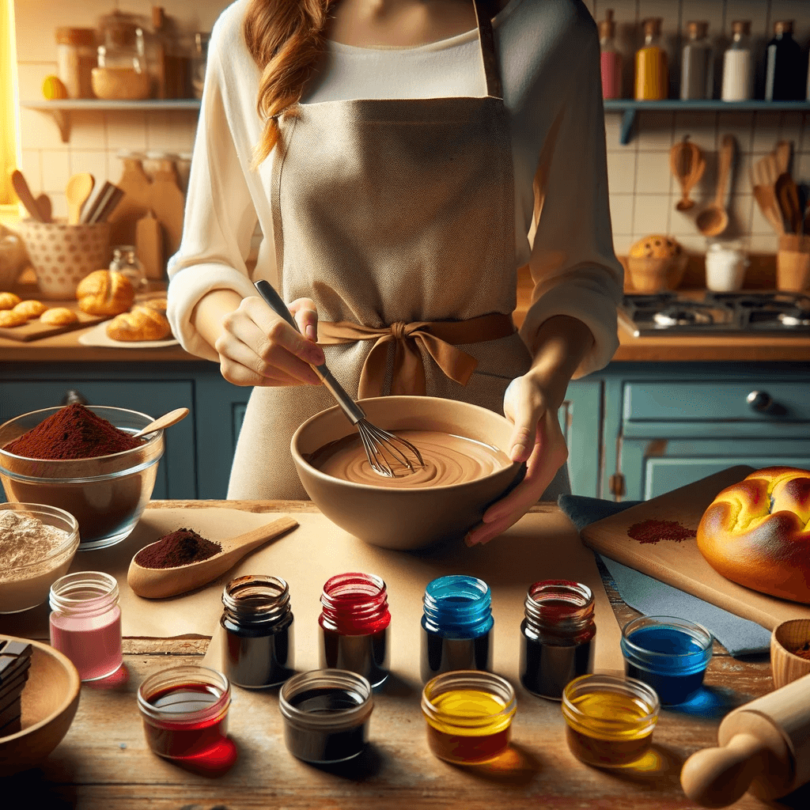Bakers and pastry chefs often need a variety of colors to enhance the visual appeal of their creations. While many colors are readily available, brown can be a bit tricky. This guide aims to provide you with comprehensive methods to create brown food coloring, both through artificial and natural means, ensuring your baked goods are not only delicious but also visually striking.
RELATED: How to cook Prime Rib
Table of Contents
Artificial Brown Food Coloring
Ingredients and Tools
- Red, green, and blue food coloring (liquid or gel)
- Rubber spatula for mixing
- Glass bowl
- Drop stopper (optional, but helpful for precise measurements)
Method
- Basic Ratio: Start with a 1:1 ratio of red and green food dyes. This combination typically yields a warm brown. For a cooler brown, add a drop of blue food dye.
- Variations: If you lack red and green, you can use blue and orange or yellow and purple, as they are also opposite each other on the color wheel and will create brown.
- Fondant Coloring: For fondant, it’s advisable to use gel food coloring to avoid adding too much liquid. Mix 3/4 teaspoon each of green and red gel food coloring with three drops of blue to one pound of fondant. Knead well and let rest for 30 minutes.
Considerations
- The ratio can be adjusted to create various shades from light tan to deep chocolate.
- Gel food coloring is recommended for more vibrant colors, especially in fondant.
- Store food coloring in a cool, dry place away from sunlight to prevent fading.
Natural Brown Food Coloring
Ingredients and Tools
- Natural colorants like turmeric, beet juice, coffee, cocoa, or spirulina
- Strainer (for chunky mixtures)
- Grater (for fresh ingredients like turmeric or beets)
Method
- Cocoa or Coffee Method: Add cocoa powder to icing for a range of brown shades. The type and amount of cocoa used can vary the shade. For a chocolate icing, mix 1 tablespoon of dark unsweetened cocoa powder with 1 cup of white icing.
- Natural Dyes: Use ingredients like beet juice or turmeric for coloring. Be cautious, as turmeric stains easily. Fresh ingredients should be grated finely and possibly strained.
- Experimentation: Mix different natural colors to achieve the desired brown hue. Keep in mind that natural colors might not be as vibrant as artificial ones.
Considerations
- Natural dyes can alter the flavor of the icing or fondant.
- Some natural dyes are not colorfast and may fade over time.
- The color might change slightly when baked, so aim for a lighter shade.
Tips for Perfect Coloring
- Test Small Batches: Before coloring the entire batch, test with a small amount to ensure you get the desired shade.
- Color Intensity: Natural colors may require larger quantities to achieve the same intensity as artificial dyes.
- Avoiding Muddy Colors: Be mindful of the proportions of each color to avoid a muddy or grayish hue.
- Custom Shades: Mix brown with other colors to create unique shades, like adding orange for a warmer tone or green for an earthy look.
Conclusion
Whether you choose artificial or natural methods, creating the perfect brown coloring for your baking projects is an achievable task. Experiment with different ratios and ingredients to find the ideal shade that complements your culinary creations. Remember, baking is not just a science but an art – the colors you choose can transform your baked goods into edible masterpieces!

